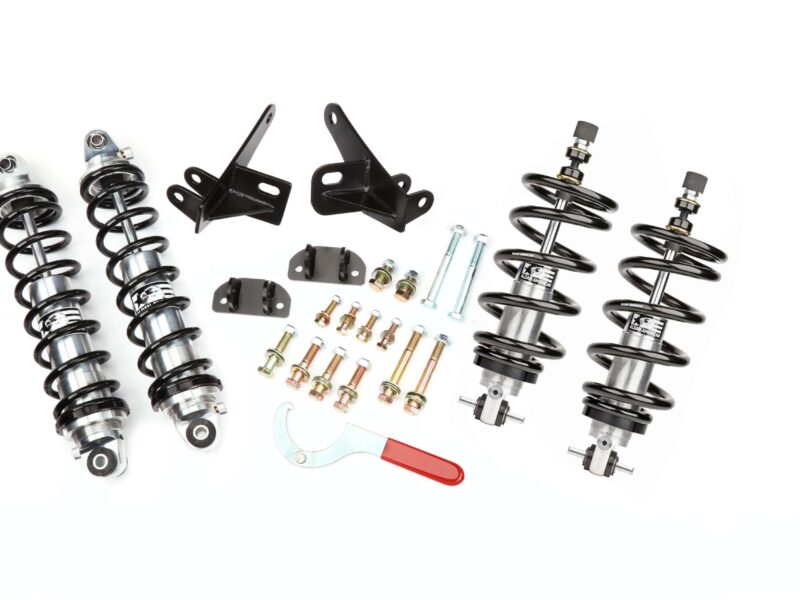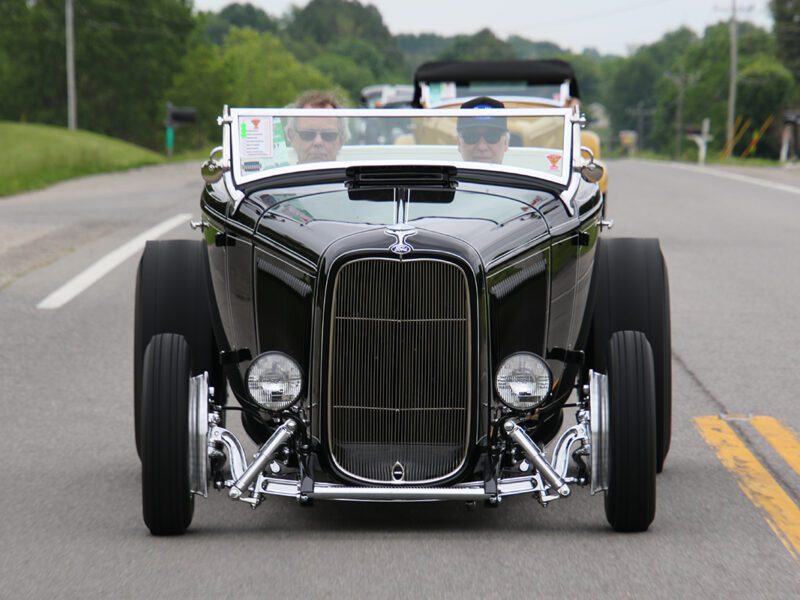Simply Shocking – A Guide to Shocks & Coil-Overs
Probably the most important components of your car or truck’s suspension system are the shocks, at least in terms of safety, handling and comfort behind the wheel. All of our hot rods are supported on a set of springs of some sort and the shock is there to dampen the compression and rebound action of the springs (which is why they’re also referred to as dampers). 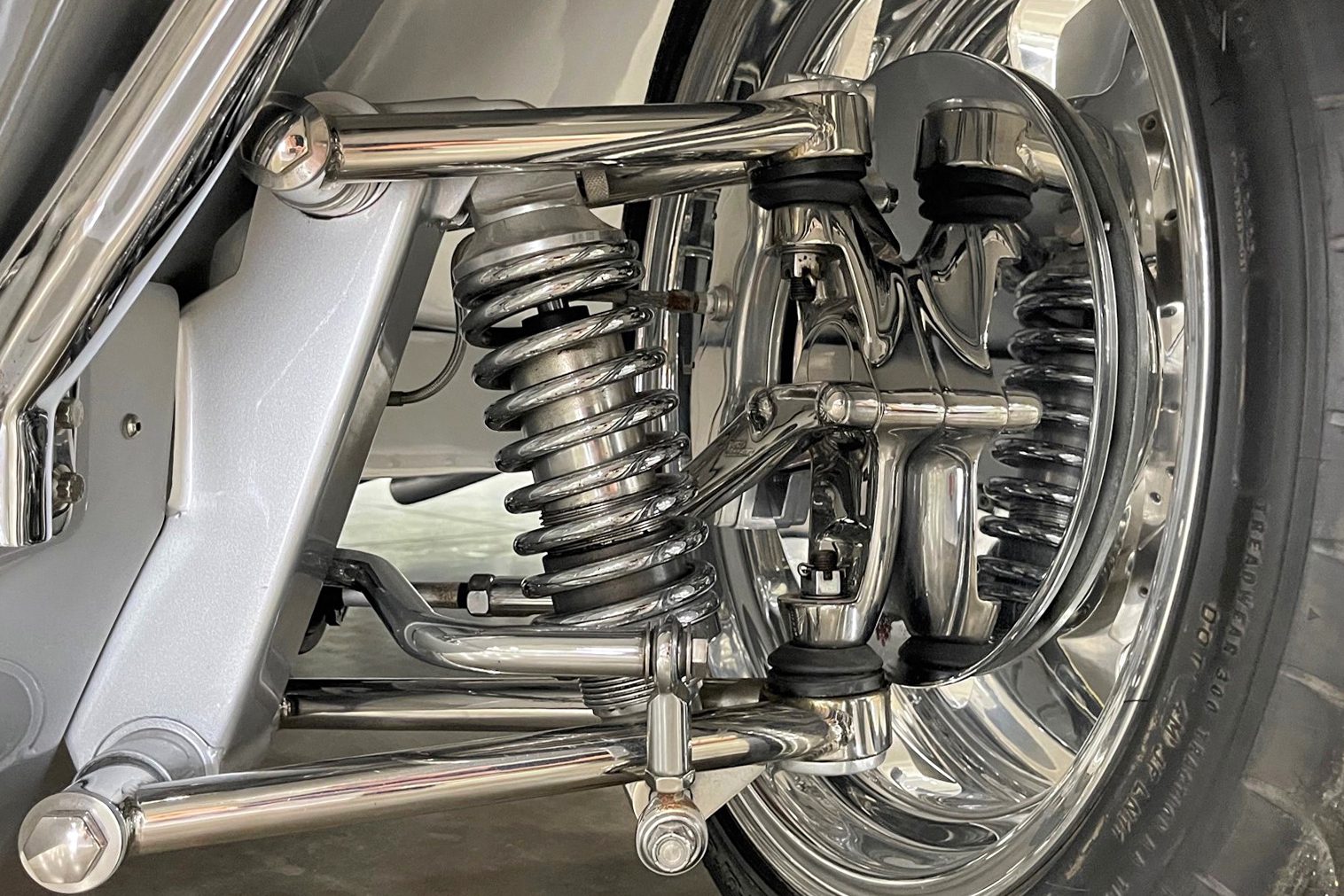 Ever see a vehicle on the road with worn out shocks? They seem to bounce along for a mile or two after even a small bump – and that makes for an uncomfortable and dangerous ride.
Ever see a vehicle on the road with worn out shocks? They seem to bounce along for a mile or two after even a small bump – and that makes for an uncomfortable and dangerous ride.
Shocks can make or break the ride and handling of your classic and there are plenty of variables to ponder when it comes to shocks and retrofit coilovers these days. There are mono and twin-tube shock designs; single-, double-, and triple-adjustable models; spring rates for coil-overs, and more to consider. Suspension upgrades have never been more popular, but can also be confusing when starting out. We set out to answer some of the most common questions about shocks and coil-overs while checking out some of the latest offerings from the aftermarket.
The Difference Between Shocks and Coil-Overs
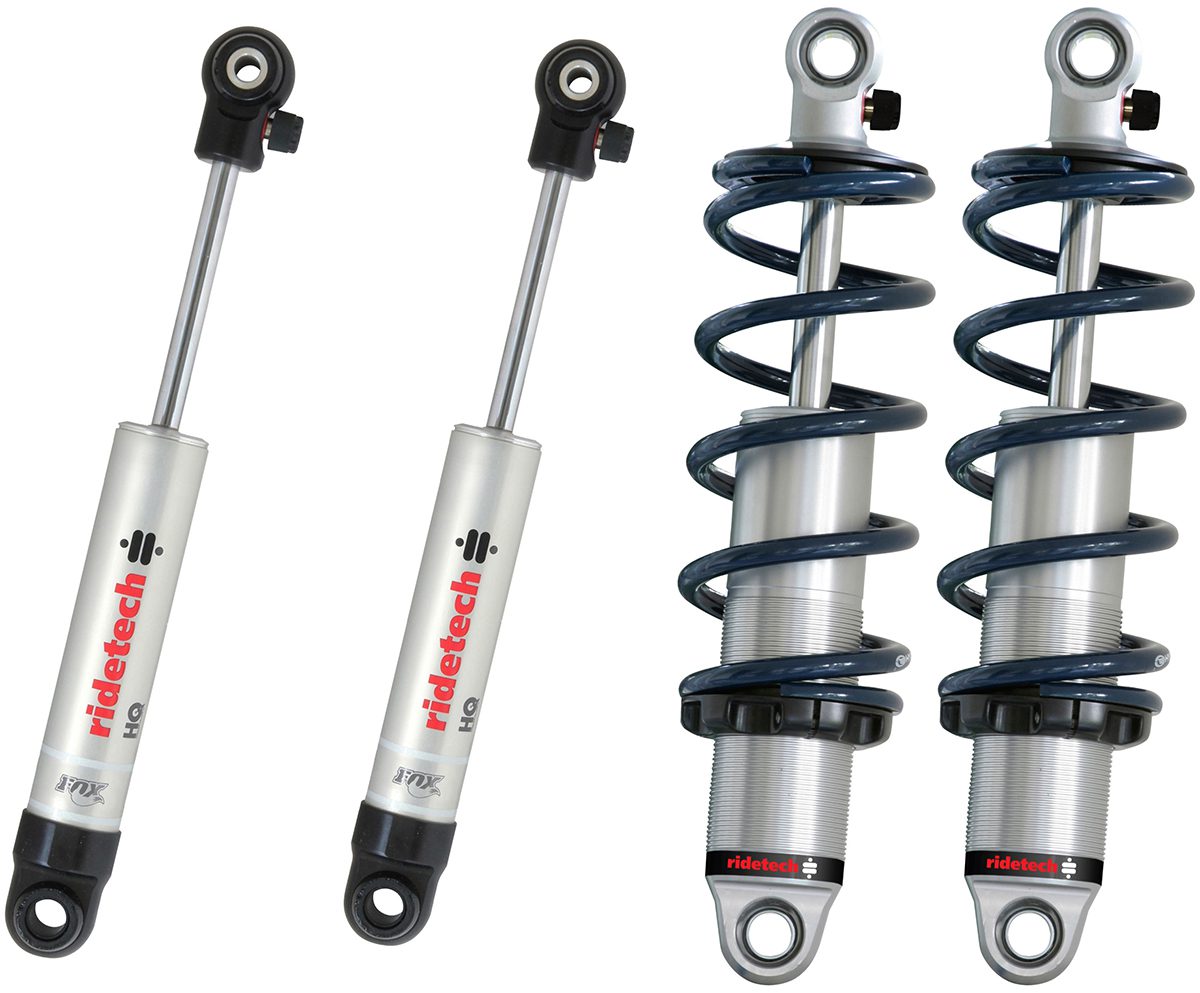
Visually, the major difference between a shock (L) and coilover (R) is the threaded body of the shock that supports the coil spring.
The most obvious difference between a shock and a coil-over is that the coil-over is designed with a coil spring mounted around the shock assembly. A shock by itself cannot support the weight of the vehicle – that is the job of the spring. A traditional shock is there to absorb and dampen the movements of the vehicle’s springs and suspension.
A coil-over incorporates the body of a shock with the addition of a coil spring into one compact assembly. One benefit to the hot rodding community is that the stance of the vehicle can be easily altered with a coil-over. When it comes to dialing in handling, there are more options for different spring rates than with a factory style coil spring, making it is easier to set up and fine tune your suspension to fit your end goals of cruising, drag racing, or sport handling.
Rebound and Compression
Two words you’ll hear a lot in discussing shocks and coil-overs are rebound and compression. Compression occurs when suspension and wheel are pressed up into the chassis, such as the first movement when rolling over a speed bump. This is also sometimes referred to as bump.
Rebound, sometimes called extension, is the movement when the suspension and wheel are moving away and extending from the chassis. The decreased weight that is unloading off the spring causes the rebound/extension. In short, compression is a squeeze, while rebound is more of a pull.
What Can You Adjust?
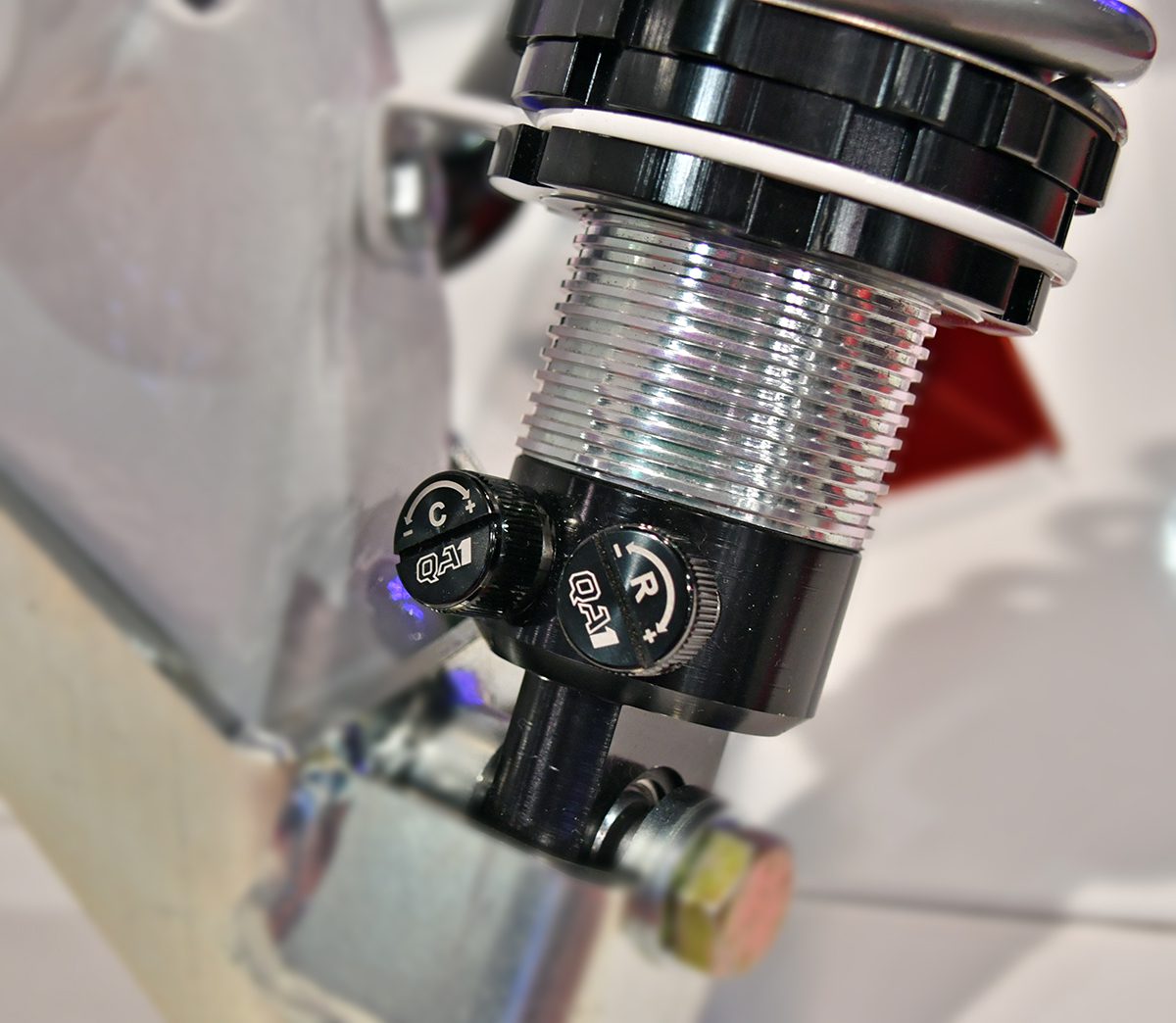
Note the two adjustment dials of this QA1 coilover; a Compression (C) and Rebound (R). Each setting is independent and has 18 positions.
Nearly all coil-overs and higher-end shocks are adjustable, but just what exactly are you adjusting? Most single-adjustment shocks give you the ability to adjust the internal valving of the shock with a small dial to affect the rebound dampening action or sometimes the compression. A double-adjustable shock will give you adjustments for both, but make sure each adjustment is independent from one another to gain the best variations in setup.
As you would expect, triple- and quad-adjustable designs provide even more adjustments, but it is still all about rebound and compression. These higher-level shocks likely allow for a lower-speed damping and high-speed damping settings (shaft speed, not vehicle speed that is). Which is right for you? It all depends on your overall goal for a cushy ride, sporty handling, or all-out autocross racer. For the majority of street cars, a single-adjustable shock will provide adequate adjustments, but a double-adjustable certainly will help get the handling and ride quality dialed in (or changed for track days) if that’s your main focus.
How to Measure for Shocks
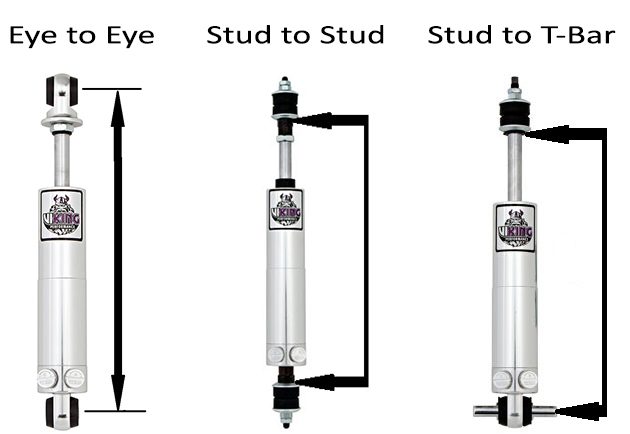
When fitting shocks for a custom application, note the mounting configuration you’ll be using as it changes the points where you get your final measurements.
The lists and applications for shock fitment are vast and varied, but with hot rodding comes custom applications. If you find yourself in need of a custom-length shock or coil-over, or if you need to find something for an application that’s not listed in a shock manufacturer’s lineup, you can provide a few simple measurements to a shock manufacturer, along with the mounting configuration, to answer your needs.
First, and most importantly, is to have the vehicle sitting at your desired ride height. With the ride height set, measure the distance from the mounting points (which varies depending on the mount). In the case of a mild cruiser, a manufacturer can use this single measurement to determine a shock with enough travel both directions, but it is best to provide a compressed length as well as an extended length.
Back to the mounting points. Does your application require an eyelet, T-bar, or will a stud mount be used? Any shock company is going to ask, so best to be prepared with an answer! Each mount is measured differently so be prepared when the representative asks!
Monotube or Twin Tube
 In doing research about shocks, you’ll see the term mono- and twin-tube used frequently. Like many vehicle systems, there are different ways to reach the same goal and that can be said about absorbing bumps and hits to the suspension. Much is written about the pros/cons, myths and misconceptions of mono- or twin-tube designs, but the major difference is in their mechanical design and control of the shock’s damping aspects.
In doing research about shocks, you’ll see the term mono- and twin-tube used frequently. Like many vehicle systems, there are different ways to reach the same goal and that can be said about absorbing bumps and hits to the suspension. Much is written about the pros/cons, myths and misconceptions of mono- or twin-tube designs, but the major difference is in their mechanical design and control of the shock’s damping aspects.
A mono-tube shock uses a single tube to contain the shaft and piston of the shock while a twin-tube has a second tube inside a larger tube. Both designs are based on hydraulic principles and moving/controlling fluid to control damping forces. A mono-tube has a larger piston to react to movement while the twin tube has a second tube within the housing where the piston moves to control the shock fluid and gas. Both have their benefits and we recommend speaking with the manufacturer to make the best choice for your application.
Spring Rates on Coil-Overs
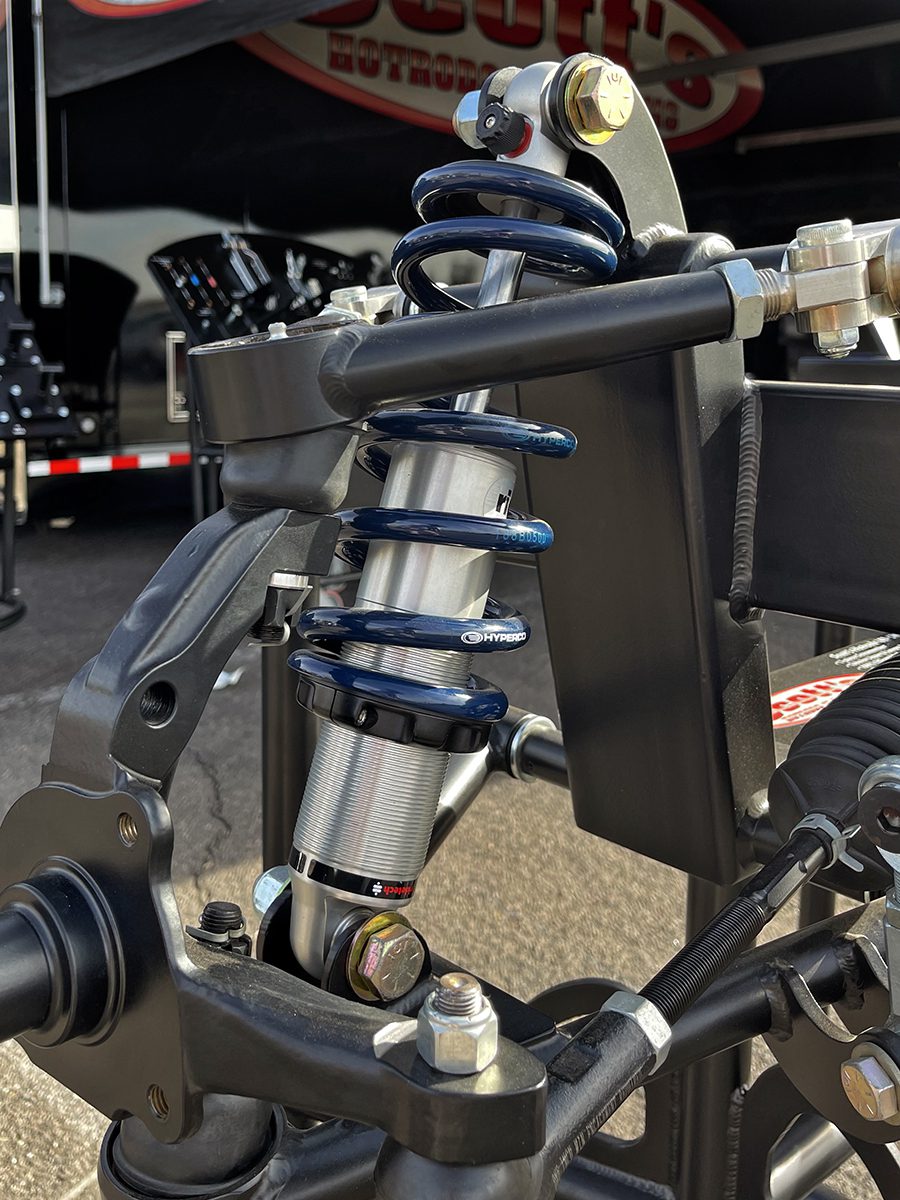 One of the biggest advantages of moving to a coil-over is the ability to select a more precise spring rate for your application. Spring rate is defined as the amount of force required to compress a spring one inch. Most shock companies will look at the vehicle’s weight, mounting angle, shock travel, and of course your intentions for the vehicle when recommending the spring for a coil-over.
One of the biggest advantages of moving to a coil-over is the ability to select a more precise spring rate for your application. Spring rate is defined as the amount of force required to compress a spring one inch. Most shock companies will look at the vehicle’s weight, mounting angle, shock travel, and of course your intentions for the vehicle when recommending the spring for a coil-over.
Again, there is no one set answer when it comes to springs, but a general rule is that the shorter the spring, the higher the spring rate. This is simply because the spring will need to control the vehicle’s motion in a much smaller distance. 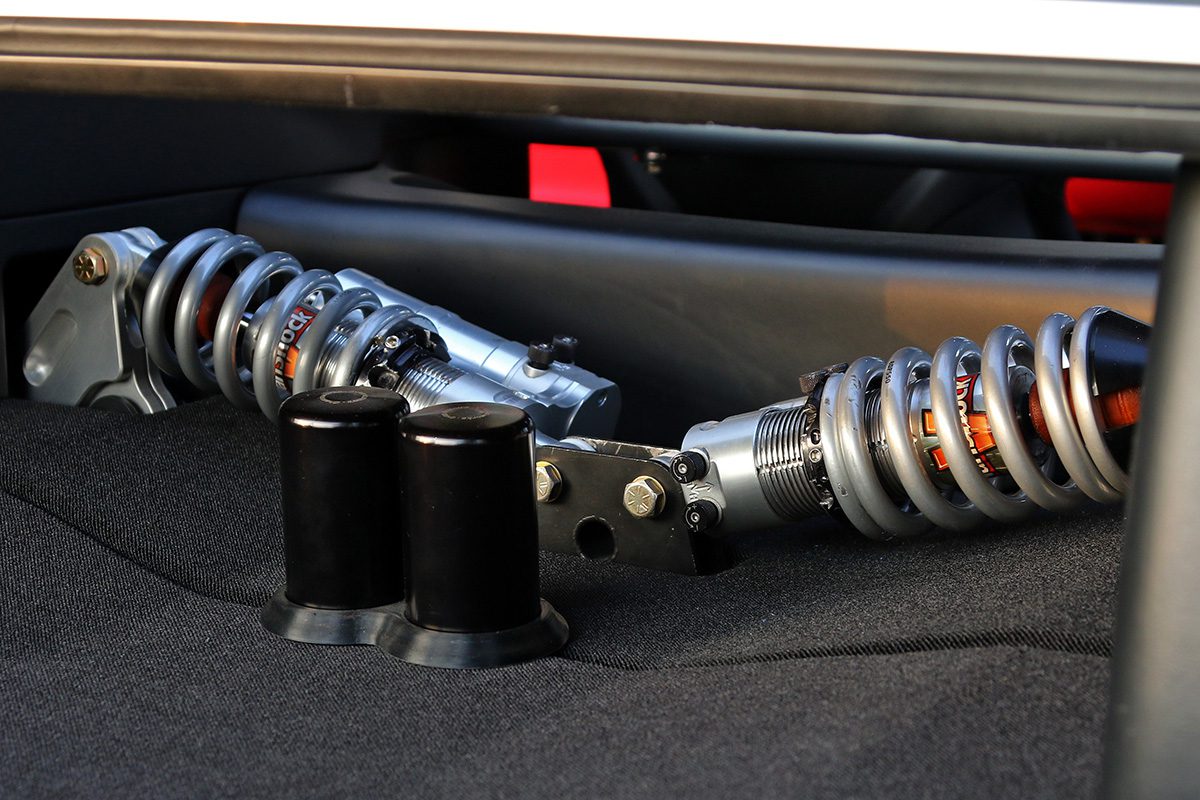 For longer coil-overs with more travel, a lighter spring rate can be used, but this could change depending on your application. For example, in a hardcore autocross application, a firmer spring rate is better for controlling body roll compared to a lighter rate for cruise nights. This is where an adjustable shock, with separate settings for compression and rebound, becomes beneficial as you try to have your cake and eat it too.
For longer coil-overs with more travel, a lighter spring rate can be used, but this could change depending on your application. For example, in a hardcore autocross application, a firmer spring rate is better for controlling body roll compared to a lighter rate for cruise nights. This is where an adjustable shock, with separate settings for compression and rebound, becomes beneficial as you try to have your cake and eat it too.
Note: Special thanks to RideTech and Viking Performance for their expertise and time. We just scratched the surface about the overall function of shocks and coil-overs. You can easily get overwhelmed in forums and online searches. We recommend going straight to the source as the manufacturers we spoke with can answer all your questions or make recommendations about your specific application.
RideTech
Chevy II Coil-Overs
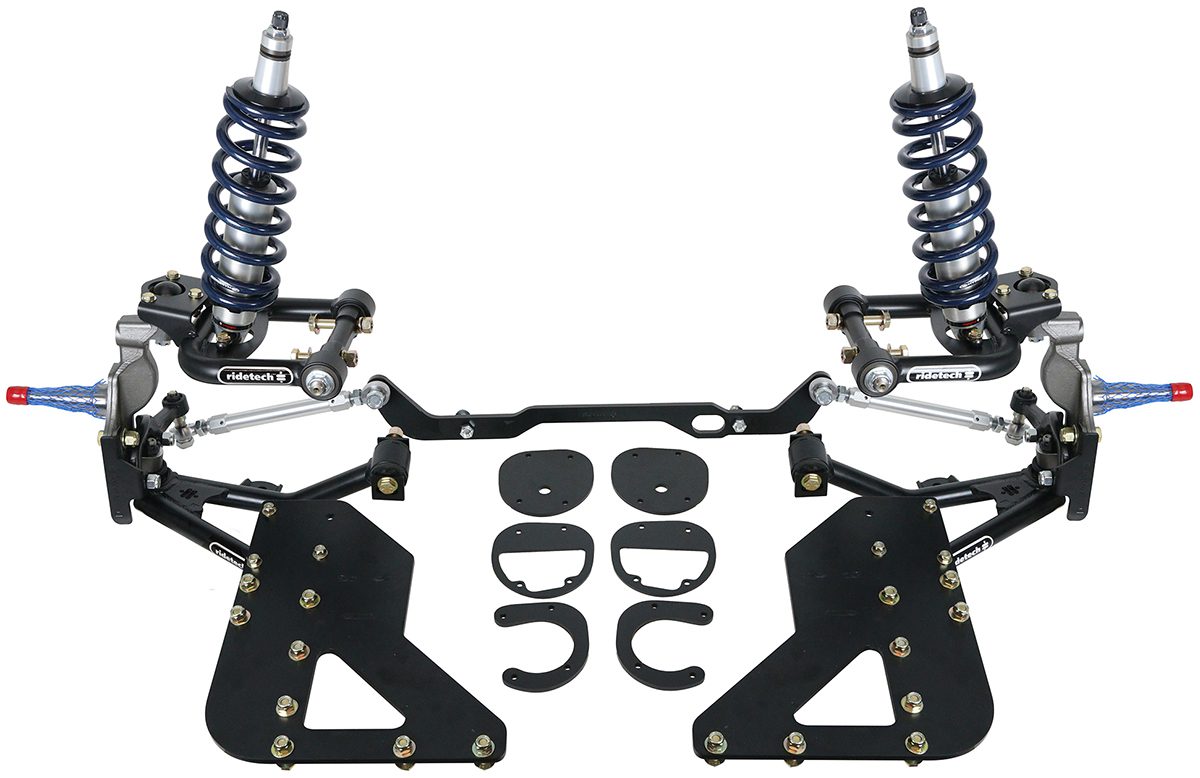 RideTech offers just about anything a modern hot rodder could want when upgrading their suspension, whether it be an advanced air setup or cone-carving coil-over system. When it comes to shocks and coil-overs (or their Shockwave), RideTech offers individual components or complete systems, such as their new Chevy II Coil-Over kit.
RideTech offers just about anything a modern hot rodder could want when upgrading their suspension, whether it be an advanced air setup or cone-carving coil-over system. When it comes to shocks and coil-overs (or their Shockwave), RideTech offers individual components or complete systems, such as their new Chevy II Coil-Over kit.
This system, for the ’62-’67 models, features their 24-position adjustable coil-overs to help fine tune the rebound adjustment to match your driving preference and vehicle demands. Inside the coil-overs, RideTech uses big 1.834-inch pistons, heavy-duty 5/8-inch shafts, and forged bodies to last the life of your Nova! The new Tru-Turn Chevy II kit includes upper and lower control arms, tall spindles, a front MuscleBar, a rear 4-Link setup, and four coil-overs.
 Viking Performance
Viking Performance
For the Voyage
Looking to simply upgrade the shocks on your hot rod? Viking Performance offers double-adjustable Voyager shocks for a number of different applications. These twin-tube shocks feature a soft, progressive rebound curve with digressive compression to eliminate harshness on uneven road surfaces. Viking makes it easy to dial-in their comfort-ride Voyagers with simple-to-follow instructions.
One benefit to a double-adjustable shock is that the adjustment of the compression and rebound valving are completely independent of one another so adjusting rebound will have no effect on compression (and vice versa). This is important in achieving the best ride and performance for your car. Viking, based in Lakeville, Minnesota, offers their Voyager series in a huge variety of shock lengths and mounting configurations in both a smooth-body and coil-over design.
Summit Racing
Double Adjustable
 Looking to get your car’s stance perfected along with improved control over its handling? Summit Racing’s double-adjustable coil-overs give you control over both, along with compression and rebound settings. They can easily be set for a soft, comfortable ride or a full hardcore handling bonanza, without removing them from the vehicle. The coil-overs have clear anodized aluminum bodies, precision-machined aluminum pistons and centerless-ground, hard chrome-plated piston rods for durability.
Looking to get your car’s stance perfected along with improved control over its handling? Summit Racing’s double-adjustable coil-overs give you control over both, along with compression and rebound settings. They can easily be set for a soft, comfortable ride or a full hardcore handling bonanza, without removing them from the vehicle. The coil-overs have clear anodized aluminum bodies, precision-machined aluminum pistons and centerless-ground, hard chrome-plated piston rods for durability.
To complete your new coil-over conversion, you’re going to need coil springs and Summit’s coil-over springs are CNC-machine coiled from high-strength, chrome silicon steel wire. They’re finished with an aerospace shot-peening procedure for extra durability and available in spring rates from 80 to 650 lbs.-in.
 Speedway Motors
Speedway Motors
Coil-Overs for Ponies
Classic Mustangs are not known for their handling savvy, certainly not by today’s standards, but Speedway Motors can help change that! They offer a bolt-in Coil-Over Conversion Kit for ’65-’66 Mustangs that will deliver easy ride height adjustment and damping adjustments to help dial in your Mustang’s looks and handling.
The kit is based on a pair of PRO coil-overs designed specifically for the first couple years of the Mustang. The upper section of the spring is built to factory dimensions to put the weight back into the body assembly rather than on a single stud. The lower coil-over mount simply bolts to the stock control arm in place of the original spring perch assembly. The springs are matched to V8 applications and an upper shock mount bracket is included to ease installation with no cutting or welding.
Aldan American
Rocking with RCX
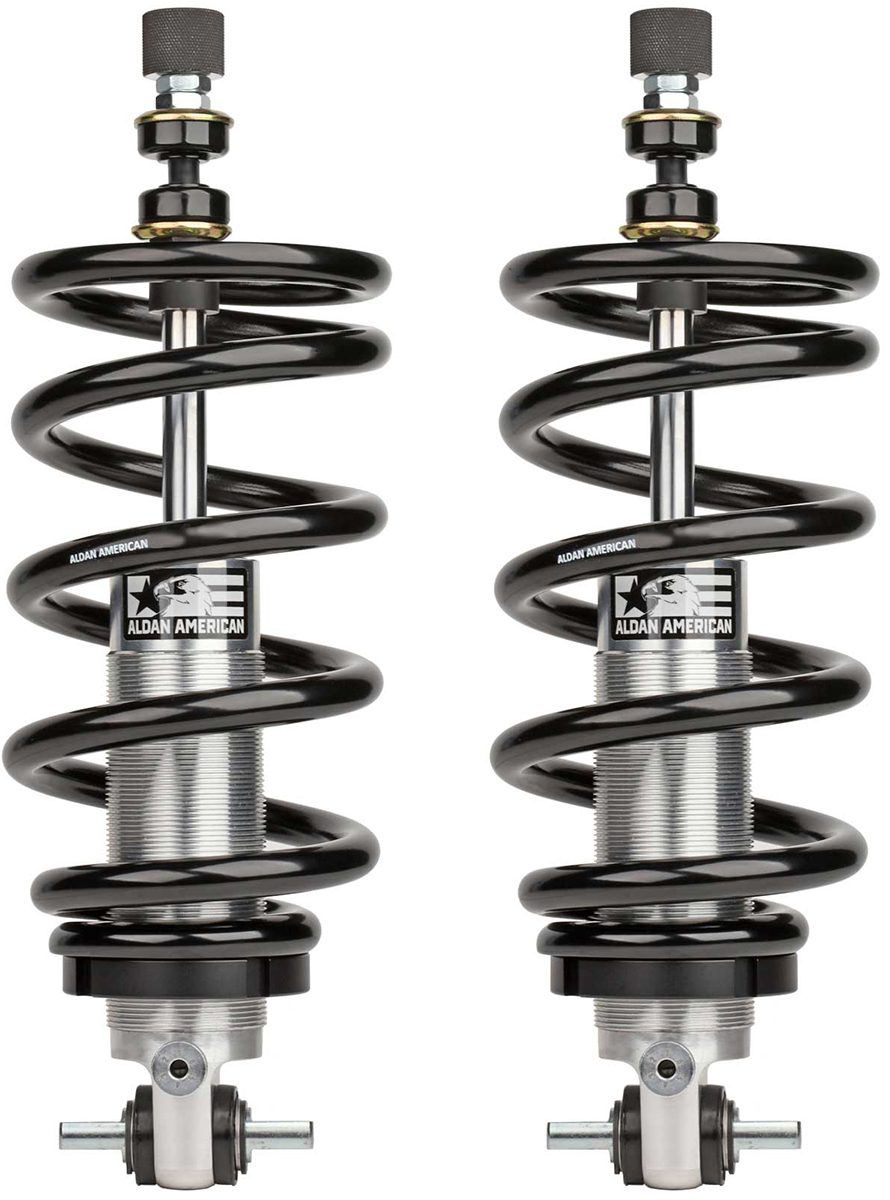 Aldan American has been building suspension components for more than 40 years and is excited about their new RCX coil-overs and kits for GM muscle cars and two-wheel-drive trucks. Their RCX coil-overs offer 180 points of shock adjustment for enhanced rebound and compression tuning capabilities, complemented with cold-wound, high tensile springs to deliver a smoother, more consistent ride quality. These coil-overs are designed to fit into OEM spring locations and can be used with factory and aftermarket tubular control arms.
Aldan American has been building suspension components for more than 40 years and is excited about their new RCX coil-overs and kits for GM muscle cars and two-wheel-drive trucks. Their RCX coil-overs offer 180 points of shock adjustment for enhanced rebound and compression tuning capabilities, complemented with cold-wound, high tensile springs to deliver a smoother, more consistent ride quality. These coil-overs are designed to fit into OEM spring locations and can be used with factory and aftermarket tubular control arms.
Aldan’s new kits allow you to set the stance with 2-inches of lowering while gaining the capability to control your shock dampening and the rate in which it rebounds and compresses. Aldan builds their coil-overs in California and offers kits for Ford and GM muscle cars and OBS trucks that will improve traction and the overall ride quality of your vehicle.
 Detroit Speed
Detroit Speed
Squarebody Systems
Detroit Speed understands the importance of a properly set up coil-over suspension and offers their “Detroit Tuned” aluminum-body coil-overs with many of their suspension kits. Each system is tuned for its application while providing ride height adjustment as well as tuning capabilities. One of their latest kits is for the ’73-’87 C10 squarebody trucks, (PN 032082) which includes their tuned coil-overs as well as all the high-performance supporting hardware such as control arms, spindles, sway bar, and a rack-and-pinion-equipped crossmember.
Coil-overs are available with a number of adjustments, from single and double to triple and even four-way adjustable coilovers. This refers to their ability to adjust high- and low-speed compression and rebound settings independently. For most enthusiasts, a single-adjustable or fixed-valve coil-over that is well tuned for the vehicle is a huge upgrade over stock, but in the world of competition motorsports, the more tunability, the better!
Hotchkis
F-Body Shocks
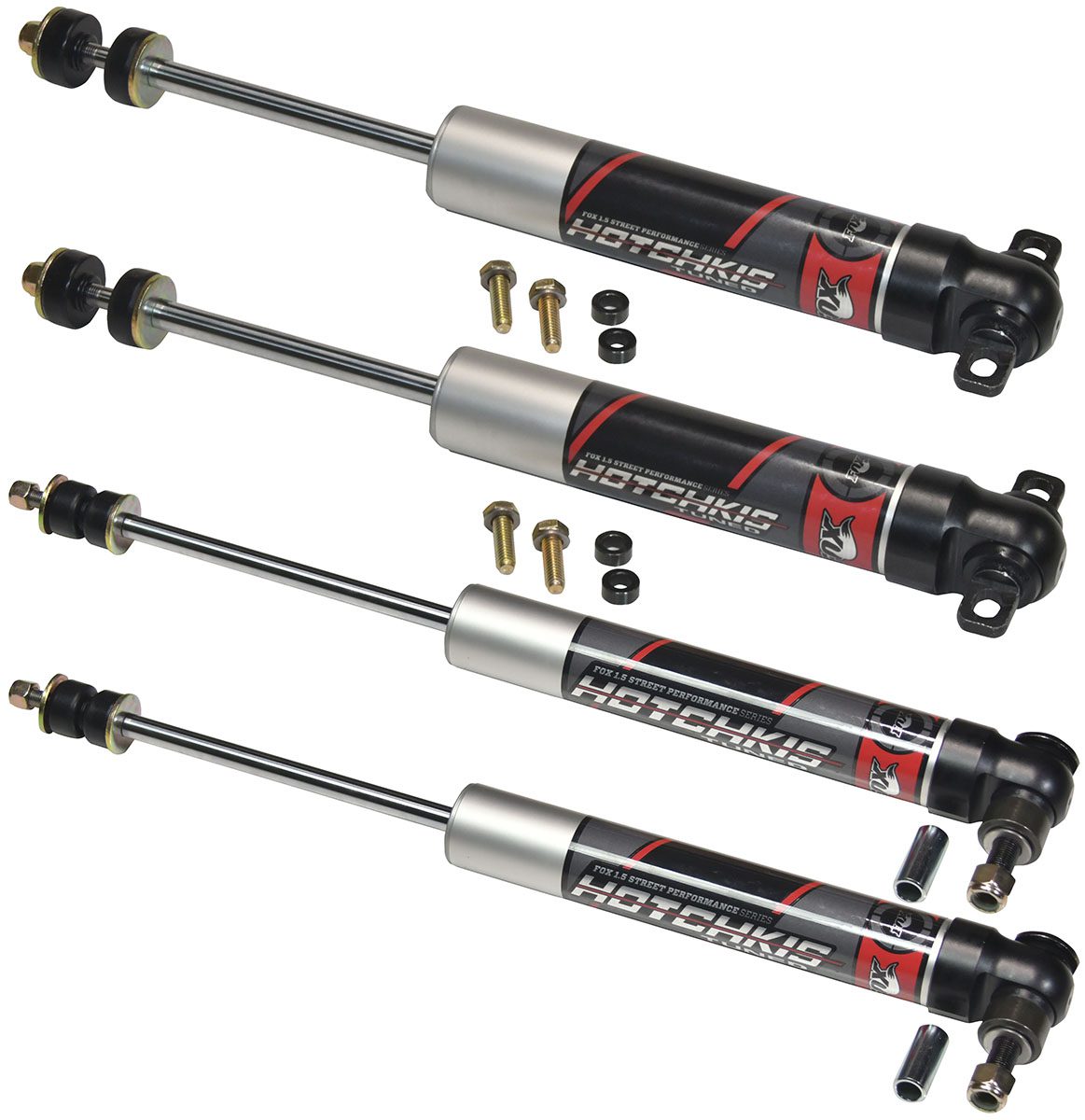 Not everyone is looking to upgrade to a complete coil-over system or all new suspension. In many cases, a high-quality set of shocks will do the trick, which is why Hotchkis Sport Suspension developed their line of 1.5 Street Performance Shocks. The shocks, tuned by the ride engineers at Hotchkis, deliver a smooth ride with exceptional control. For first-gen Camaro and Firebird owners, they offer a direct bolt-in kit (PN 79020003).
Not everyone is looking to upgrade to a complete coil-over system or all new suspension. In many cases, a high-quality set of shocks will do the trick, which is why Hotchkis Sport Suspension developed their line of 1.5 Street Performance Shocks. The shocks, tuned by the ride engineers at Hotchkis, deliver a smooth ride with exceptional control. For first-gen Camaro and Firebird owners, they offer a direct bolt-in kit (PN 79020003).
The shocks feature a mono-tube design including digressive disc technology and a high-flow piston. A half-inch chrome plated shaft is also heat treaded for added strength, while the end caps are machined from billet aluminum and filled with polyurethane bushings and new hardware. Hotchkis also offers a line of advanced coil-overs for GM A- and F-bodies with wireless adjustability.
 QA1
QA1
Mustang II Coil-Over
There are thousands of hot rods out there that were built with Mustang II front ends and would benefit from modern coil-over technology. Not just older rods built with original Ford parts, but even fresher builds with aftermarket front suspension systems. This is exactly why QA1 developed a line of coil-overs specifically for the classic front end system.
QA1’s Mustang II coil-overs are perfect to help achieve your ideal stance while providing optimal comfort. Plus, the on-car adjustable valving makes it easy to dial-in your desired level of comfort and handling prowess. QA1 offers single- or double-adjustable coil-overs, as well as several different spring options to fit your application.
Chris Alston’s Chassisworks
Working the Chassis
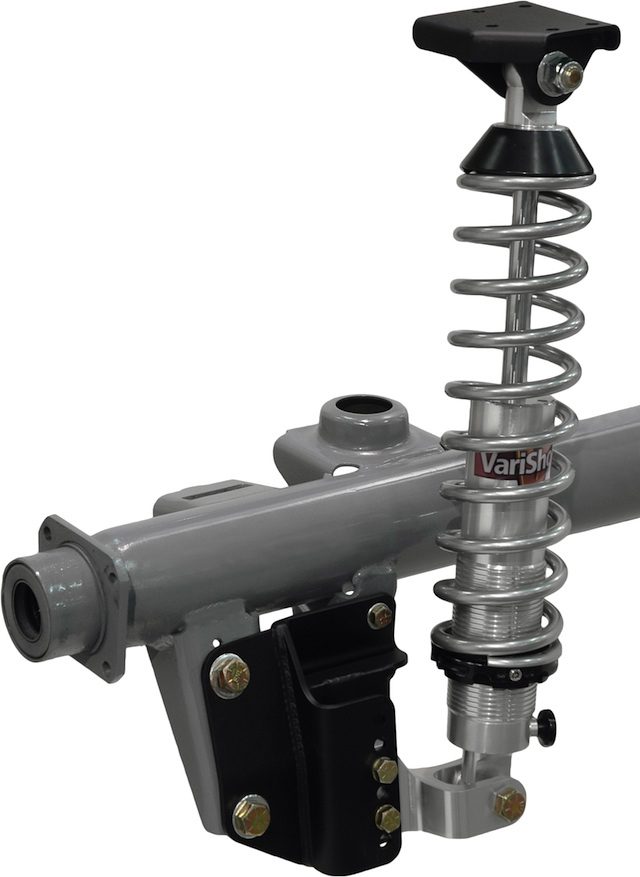 Chris Alston’s Chassisworks offers a full line of their own direct-fit shocks and coil-overs, along with a Custom Builders Series and setups with remote reservoirs and more. Their line of VariShock coil-overs area available in lengths ranging from 9.67- to 17.24-inches with travel lengths of 2.8- to 7.15-inches. In fact, there are 36 various configurations available that can be used with on nearly any OEM or aftermarket suspension.
Chris Alston’s Chassisworks offers a full line of their own direct-fit shocks and coil-overs, along with a Custom Builders Series and setups with remote reservoirs and more. Their line of VariShock coil-overs area available in lengths ranging from 9.67- to 17.24-inches with travel lengths of 2.8- to 7.15-inches. In fact, there are 36 various configurations available that can be used with on nearly any OEM or aftermarket suspension.
For Chevelle and fellow GM A-body owners, Chassisworks offers a rear coil-over conversions system that can be bolted or welded in place. The system includes their VariShocks and springs in a fixed or an adjustable setup. Springs are available from 110-400 lb-in, with the baseline set at 200. The lower mount is also designed to allow for more ride height adjustments.

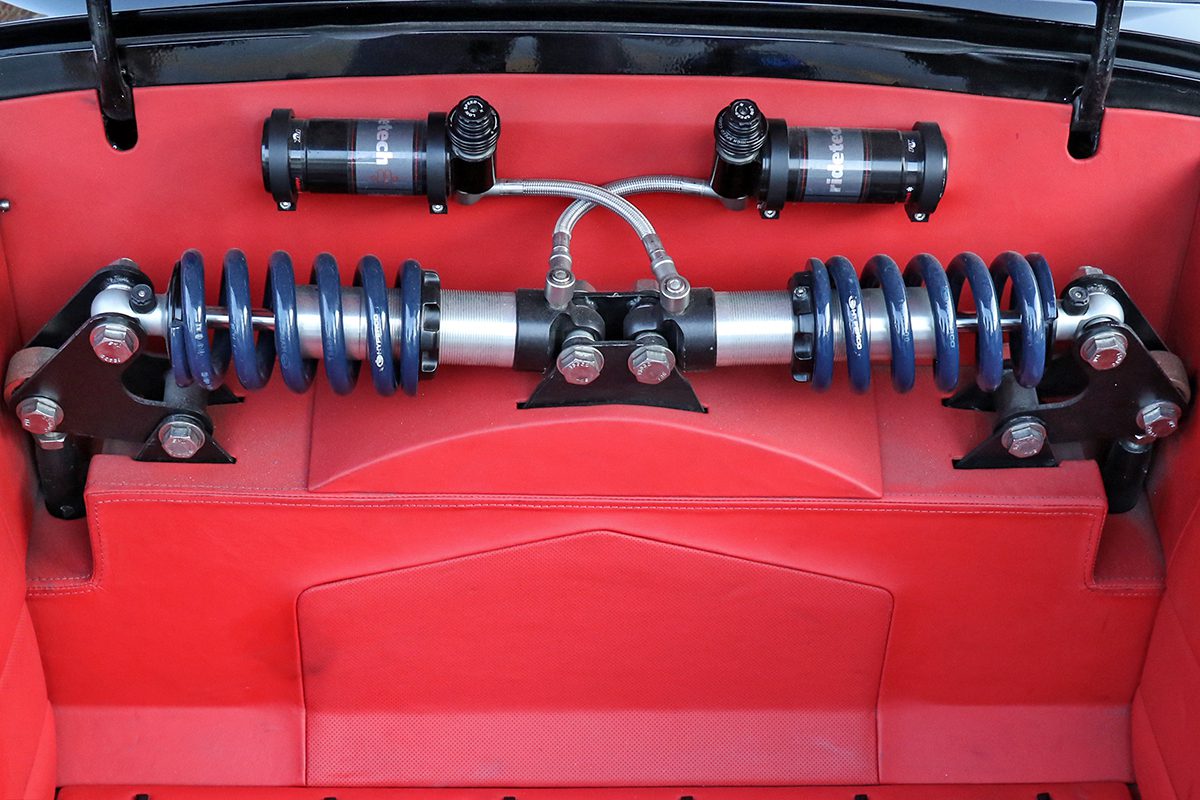
 Viking Performance
Viking Performance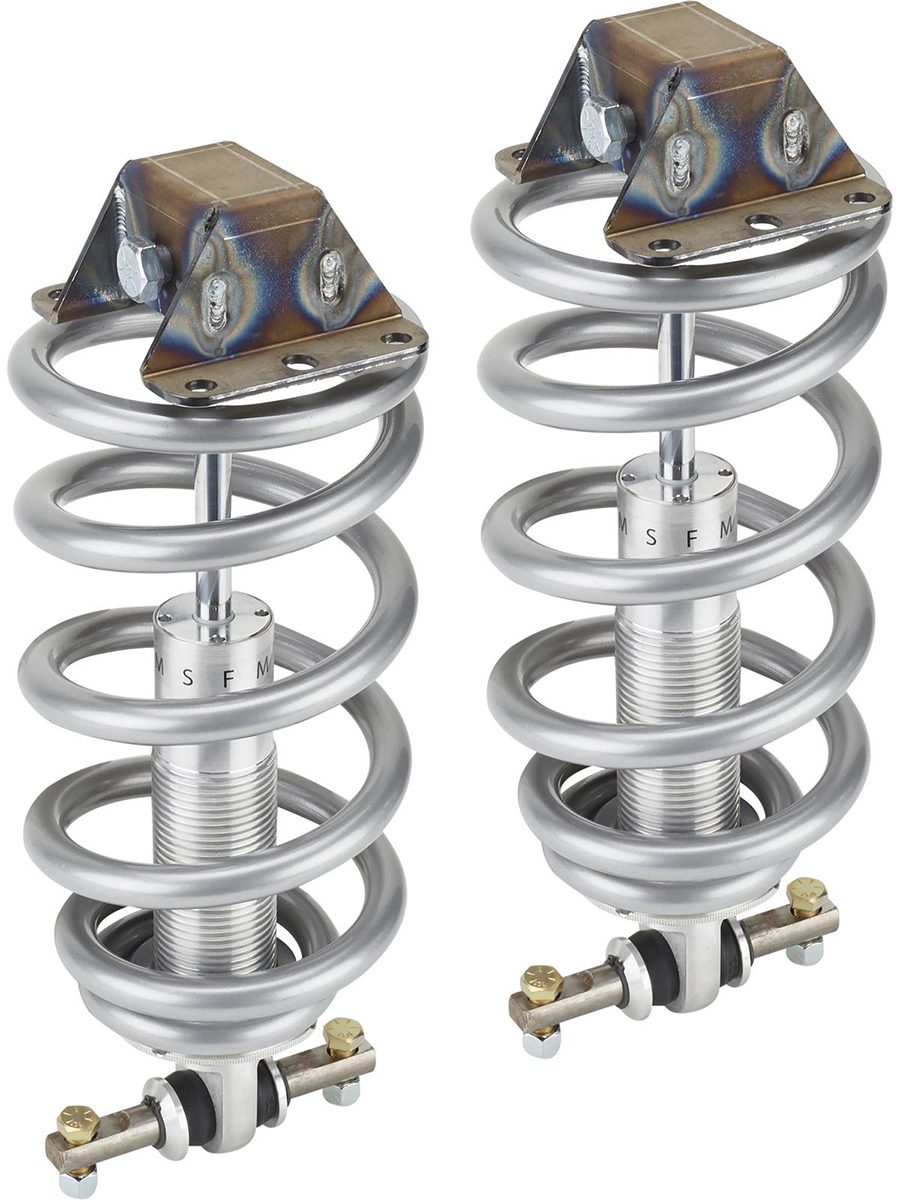 Speedway Motors
Speedway Motors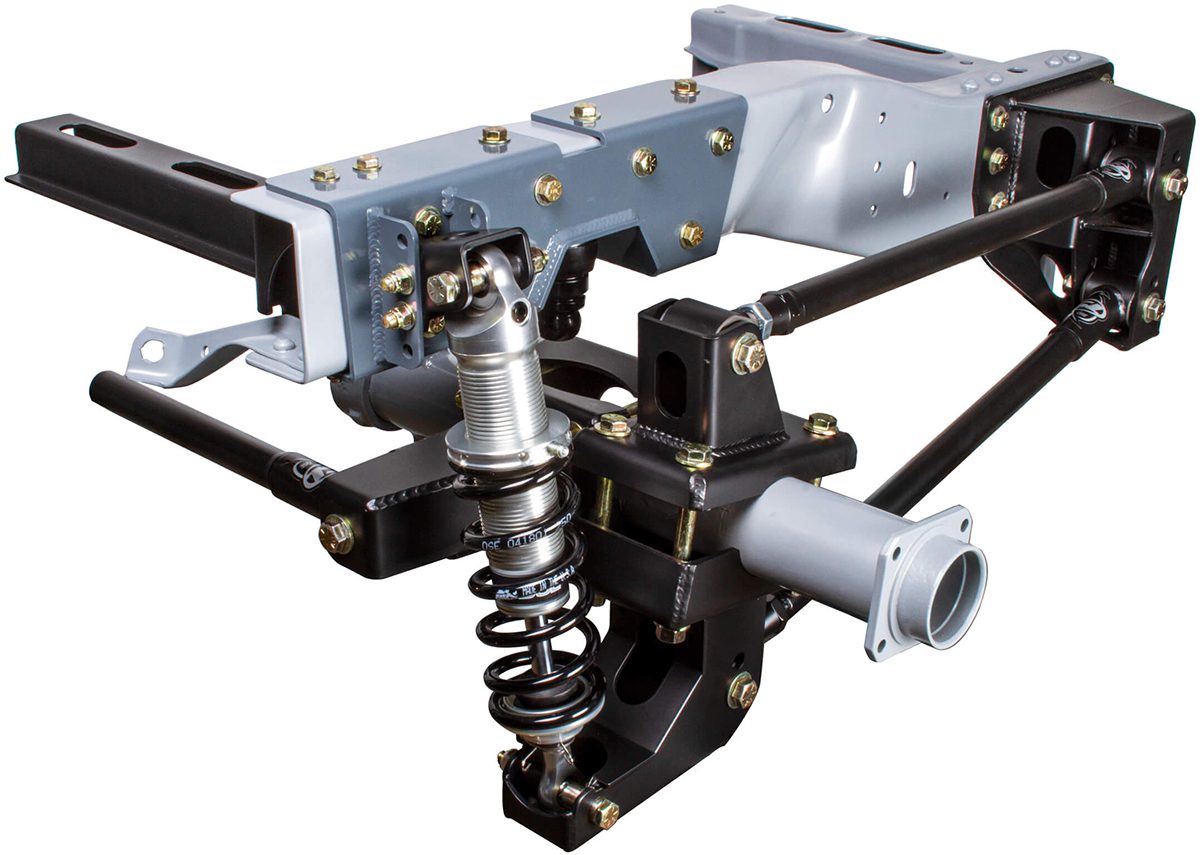 Detroit Speed
Detroit Speed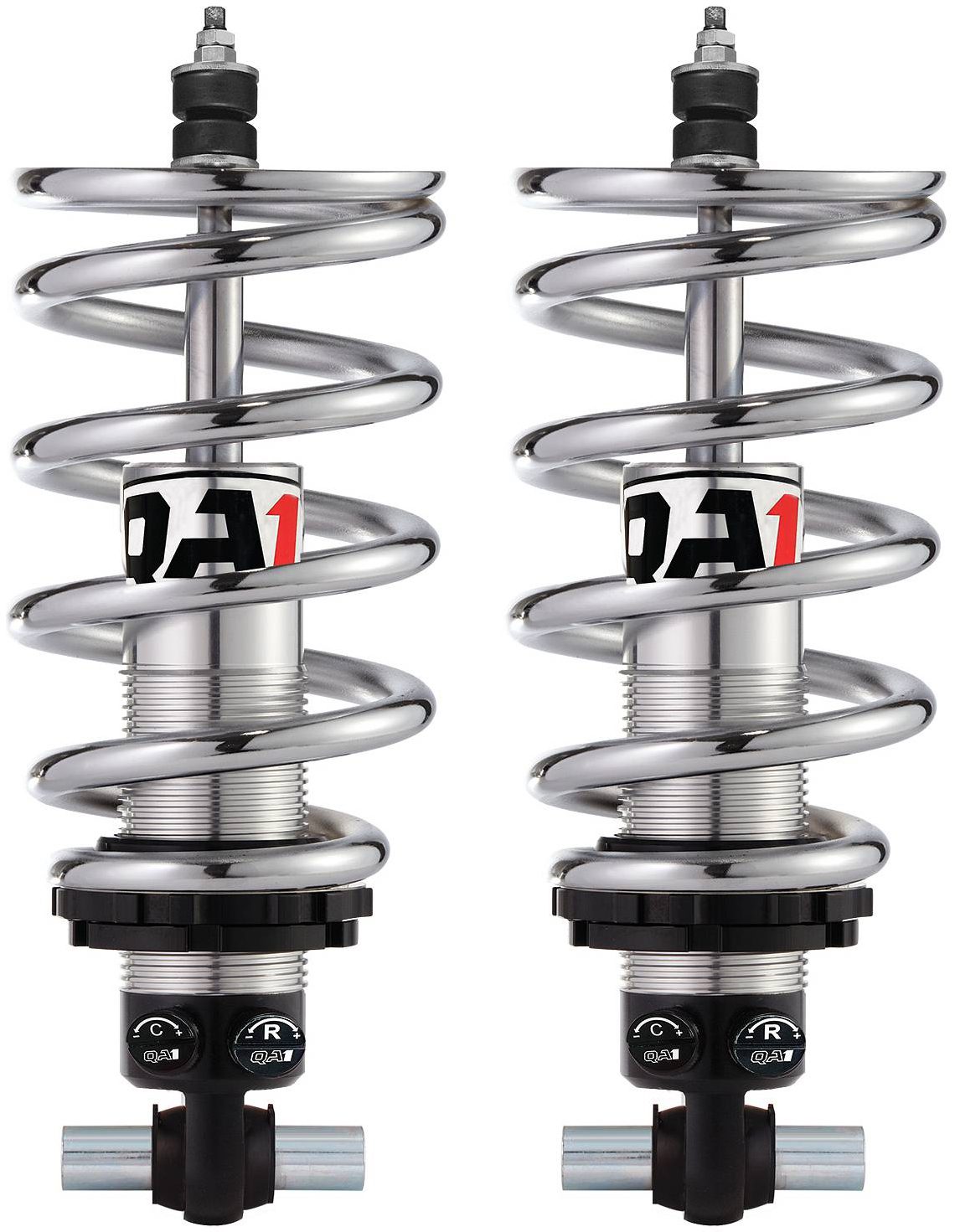 QA1
QA1
